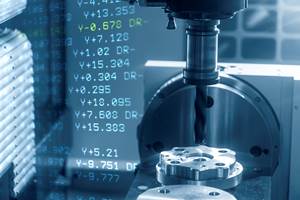Different Company Types Have Different CNC Needs
A company鈥檚 CNC needs can vary depending on what it produces.
Share





Many companies have only one kind of CNC machine tool, and they specialize in the processes that this type of machine can perform. For example, the company might specialize in turning processes performed by sliding-headstock CNC lathes. They also tend to specialize in running small lots—giving them much in common with prototype-producing companies. For these reasons, workpiece-producing companies need to be very good at the processes in which they specialize. This narrow focus is often the very factor that enables them to outperform product-producing companies and make a profit producing workpieces those companies farm out.
Related Content
Tips for Designing CNC Programs That Help Operators
The way a G-code program is formatted directly affects the productivity of the CNC people who use them. Design CNC programs that make CNC setup people and operators’ jobs easier.
Read More2 Secondary Coordinate Systems You Should Know
Coordinate systems tell a CNC machine where to position the cutting tool during the program’s execution for any purpose that requires the cutting tool to move.
Read MoreA Balancing Act for Differential Gaging
Differential gaging measures using two devices, which has advantages over standard, comparative measurements using a single sensing head. These include the ability to measure size without regard to position.
Read MoreA Higbee Thread Milling Custom Macro
Higbee threads provide a full thread form at the very start of the thread. The sharp edge is removed during the machining process.
Read MoreRead Next
How I Made It: Dennis Rymanowski
Dennis Rymanowski has worked at NSH USA for 60 years, with his passion for manufacturing living alongside his passion for his family’s polka band.
Read MoreA New Frontier in Surface Finish Control
What if your machine tool could measure surface roughness as it cuts? This article explores how in-process metrology is advancing from concept to reality, enabling real-time feedback, immediate detection of anomalies and new levels of control over surface quality. Discover the technologies making this possible.
Read More.jpg;width=70;height=70;mode=crop)



















